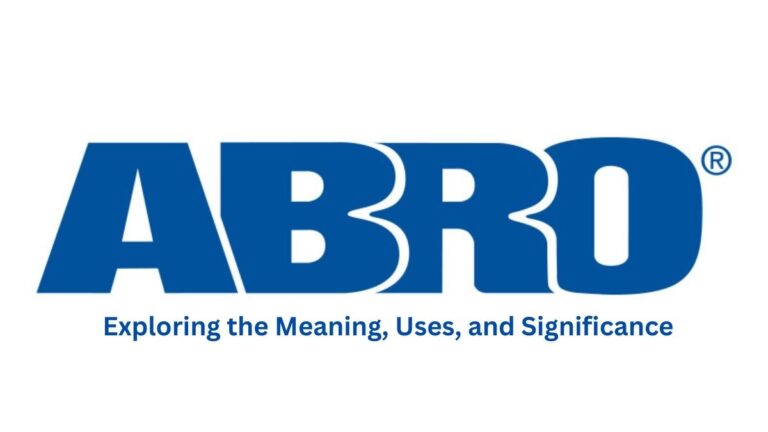Innovative Strategies for Effective Sustainability Reporting
Effective sustainability reporting requires transparent data collection, stakeholder engagement, and advanced analytics. It should incorporate clear metrics, align with recognized frameworks, and emphasize long-term goals. Leverage technology for real-time tracking and reporting, ensuring accuracy and accountability while communicating progress and challenges to build trust and drive continuous improvement.
The Importance of Sustainability Reporting
Reporting on sustainability has emerged as a critical component of corporate accountability. Due to growing pressure from stakeholders, companies are now prioritizing environmental and social responsibility in addition to profit in response to the need for transparency and accountability. By incorporating ESG reporting, organizations can highlight their commitment to sustainable practices and build a strong foundation of trust with their stakeholders. This trust is essential in today’s business environment, where consumers, investors, and partners increasingly prioritize ethical and green business practices.
Effective sustainability reporting enhances a company’s reputation and provides valuable insights into its operational efficiency. These studies allow companies to evaluate their environmental performance, pinpoint areas in need of development, and match their plans to global sustainability objectives. For instance, by tracking carbon emissions and energy consumption, companies can implement measures to reduce their carbon footprint and optimize energy use, leading to cost savings and improved environmental impacts.
Critical Components of Effective Reporting
A comprehensive sustainability report typically includes extensive details about a company’s environmental initiatives, social impact, and governance practices. Key components of effective sustainability reporting involve:
- Environmental Impact: Critical metrics include carbon footprint, energy consumption, waste management, and resource utilization. These elements provide a clear picture of how a company interacts with the environment and what actions are taken to mitigate negative impacts.
- Social Impact: The report heavily relies on community involvement, employee welfare, and corporate social responsibility (CSR) initiatives. These sections highlight the company’s commitment to its workforce and the broader community, showcasing efforts to support critical social causes.
- Governance: Information on corporate governance practices, ethical standards, and compliance with regulatory frameworks is essential. Strong governance ensures legal compliance and fosters a culture of transparency and ethical behavior within the organization.
By addressing these components, organizations can provide a holistic view of their sustainability efforts and engage stakeholders in meaningful dialogue. This transparency helps build a positive corporate image and attracts socially responsible investors looking to invest in sustainable businesses.
Tools and Technologies for Improved Reporting
Many tools and technologies have surfaced to improve the sustainability reporting process. Platforms focused on data collection, analysis, and visualization can streamline reporting efforts and ensure accuracy. Specialized software that automates data collection, lowers mistake risk and offers real-time insights about sustainability performance is one example of these technologies. These systems help businesses organize large datasets to identify trends and areas needing development more efficiently.
Additionally, specialized software solutions can integrate seamlessly with existing systems to efficiently gather and manage sustainability data. These technologies enable organizations to track their progress against sustainability targets, generate comprehensive reports quickly, and share their sustainability achievements with stakeholders through interactive dashboards and infographics. For instance, integrating IoT devices for real-time monitoring of water and energy usage can significantly enhance the accuracy and granularity of sustainability data.
Data-Driven Decision Making
Utilizing data to drive sustainability initiatives can significantly impact a company’s operational efficiency and environmental footprint. By leveraging data analytics, organizations can identify trends and areas for improvement, making informed decisions that align with their sustainability goals. For example, analyzing data related to energy consumption across different facilities can help identify locations with higher-than-average usage, prompting targeted energy-saving measures.
Data-driven decision-making allows businesses to measure the effectiveness of their sustainability initiatives, set realistic targets, and monitor progress over time. This approach empowers organizations to optimize resource allocation, reduce environmental impact, and enhance overall performance. When companies can access accurate data, they can create more precise strategies to tackle sustainability challenges effectively, driving continuous improvement and innovation in their operations.
Challenges and Solutions in Sustainability Reporting
Despite the benefits, sustainability reporting has its challenges. Common issues include data accuracy, resource allocation, and compliance with regulations. However, there are innovative solutions to overcome these hurdles:
- Data Accuracy: Implementing automated data collection systems can minimize human errors and ensure accurate reporting. By using advanced technologies like IoT sensors and blockchain, companies can provide the immutability and traceability of their data.
- Resource Allocation: Leveraging technology and data analytics can help organizations allocate resources efficiently and prioritize the most significant impact initiatives. This can include adopting machine learning algorithms to predict the success and ROI of different sustainability projects.
- Regulatory Compliance: Staying updated with regulatory changes and adopting best practices can ensure compliance and avoid potential legal issues. Engaging environmental law and sustainability experts can guide organizations in maintaining compliance and implementing proactive measures.
By addressing these challenges proactively, organizations can enhance their sustainability reporting and demonstrate their commitment to responsible practices. Doing so helps avoid negative repercussions and strengthens the company’s reputation and stakeholder relationships.
Future Trends in Sustainability Reporting
The outlook for sustainability reporting looks promising, especially with the integration of advanced technology such as blockchain and artificial intelligence. These advancements can enhance transparency, reliability, and security in reporting processes. Blockchain technology, for instance, enables data immutability and traceability, ensuring the integrity of sustainability reports and building greater stakeholder trust.
Furthermore, integrating ESG (Environmental, Social, Governance) criteria is becoming increasingly prevalent, reflecting a more holistic approach to sustainability. As stakeholders demand greater accountability, businesses must adopt innovative strategies and leverage cutting-edge technologies to stay ahead in their sustainability reporting efforts. By integrating AI, companies can predict trends, automate repetitive tasks, and generate more insightful reports.
The growing need for transparency, accountability, and responsible business practices drives the evolution of sustainability reporting. By adopting these upcoming trends, organizations may improve their sustainability performance, gain the trust of stakeholders, and help create a more sustainable society. Businesses that keep up with these developments will be better able to satisfy the demands of a socially conscious consumer base and secure their long-term prosperity.







